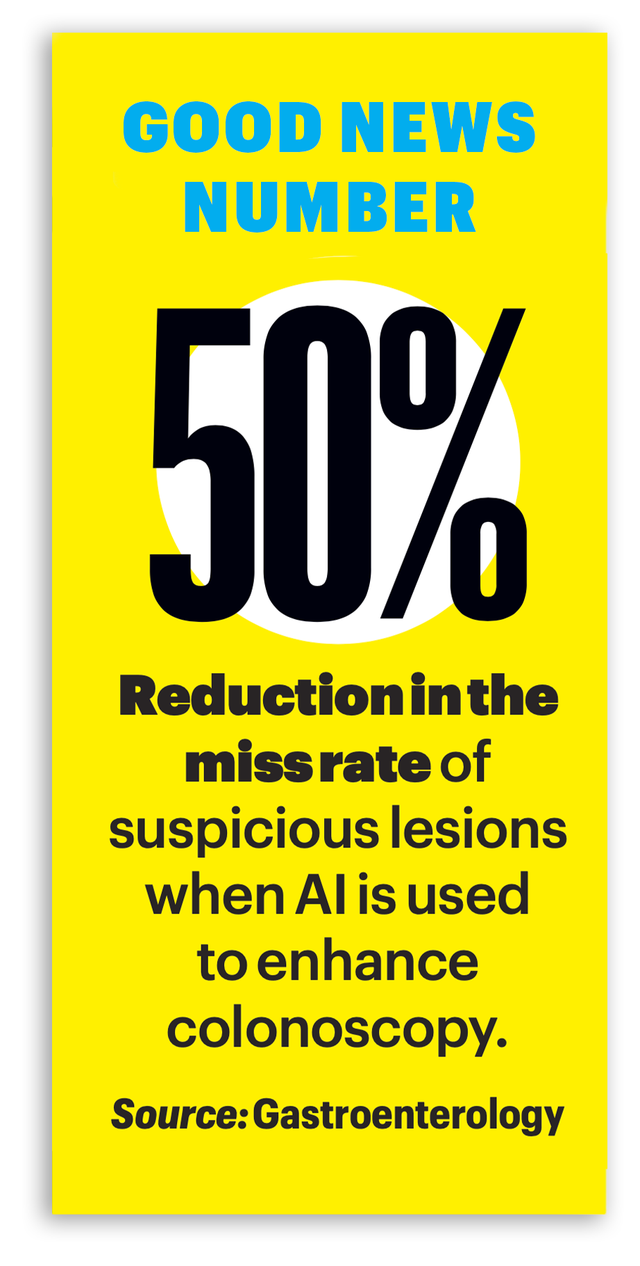Introducing The Optimist’s Guide to Cancer, where we outline actionable, strategic steps for cancer prevention and survival. To read the rest of the stories, click here.
“NOBODY SHOULD EVER die from prostate or colon cancer,” says Peter Attia, M.D., author of Outlive: The Science and Art of Longevity. “That’s because the rate at which they progress and the manner they progress is relatively slow. But you need to be thoughtful about screening.” Currently, prostate cancer kills 34,500 men annually and colorectal cancer 28,400 men. The goal with screening, he notes, is an early detection of a treatable problem rather than a late discovery of a grim one. “Early detection is paramount because of the complete asymmetry in survival of treating early stage cancer when it’s a billion cells versus late stage when it’s a hundred billion cells,” he says. Thankfully a series of technological innovations in screening are making earlier detection more likely.
The Tech: Liquid Biopsy
ONE BLOOD TEST, known as Galleri, can detect more than 50 types of cancer by identifying DNA shed by cancer cells. Dr Attia is using Galleri with his patients, coupled with a screening approach that’s more proactive than what government guidelines recommend. His goal: early detection of a treatable problem rather than late discovery of a grim one. In the future, other blood tests may detect cancer even earlier than other screening methods, maybe as much as a year before tumors begin to form. One new test called HrC checks for stem cells that hold a biomarker for cancer and is being tested in some hospitals in the UK.
The Tech: AI Colonoscopies
COLONOSCOPIES HAVE LONG BEEN the gold standard for colorectal-cancer screening—and now AI is making them even better. The screening process works a little like (of all things) facial-recognition software, says James East, M.D., a gastroenterologist at Mayo Clinic Healthcare in London. “Instead of training the AI to recognize faces, we train it to recognize potential polyps,” he says. Dr. East and his colleagues published a study in Gastroenterology last year that revealed that incorporating AI into colonoscopies reduced the risk of missing suspicious lesions by 50 percent. More good news: “The cure rates of early colorectal cancer are incredibly high—more than 70 to 90 percent are completely cured,” says Andrew Hendifar, M.D., M.P.H., medical director of the Pancreatic Cancer Screening and Early Detection Program at Cedars-Sinai in Los Angeles.
The Tech: Prostate MRI
ONCE YOU GET a PSA result indicating the possibility of cancer, the next step in figuring out what’s going on has traditionally been a biopsy. But recent research has revealed that undergoing an MRI first is actually a better next step for men with suspected prostate cancer. For some, prostate MRIs might even be enough to determine whether you can skip the biopsy altogether. Even if you do need a biopsy, undergoing an MRI first may help decrease the need for additional biopsies and increase the accuracy of the procedure, says oncologist Pedro Barata, M.D., at UH Seidman Cancer Center in Cleveland. Hasn’t been mentioned to you? Talk to your doctor! “Most patients are still not doing MRI first, but it’s the new standard of care, so it’s important to ask about MRI prior to biopsy,” he says.
Colonoscopy Screening
- First screening, if you have a family history (dad, sister, etc.) of colorectal cancer: ten years before the earliest diagnosis. (Dad found out at 47; you schedule for 37.) Also talk to a doc about early screening if you have a health condition, such as Crohn’s disease, that puts you at higher risk.
- First screening, if you don’t: 45. (Yes, it used to be 50.)
- Except: If you notice any changes in your bowel habits—blood in the stool, abdominal pain, unexplained weight loss—go to a doc and see if you need one now.
Prostate Scheduling
- First screening, if you have more than one first-degree relative diagnosed under age 65 or genetic issues such as a BRCA mutation or Lynch syndrome: 40. (A first-degree relative [brother, father] diagnosed in their 40s means you may need to go even earlier.)
- First screening, if you’re Black: 45, because prostate-cancer rates are 73 percent higher in non-Hispanic Black men than in non-Hispanic white men.
- First screening, if you have a first-degree relative who was diagnosed with prostate cancer under age 65: 45.
- First screening, if none of the above applies: 50.
This story appeared in the May/June 2023 issue of Men’s Health.








Comments are closed.